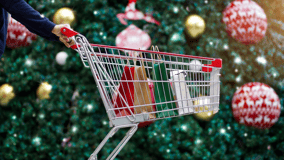Whilst many industries have had to cope with unexpected shutdowns, layoffs, and planning a path to survival during the pandemic, essential workers have stepped up to keep the wheels of industry turning.
One of the less celebrated heroes of this crisis is the men and women in the HVACR industries. They have been on the frontline during the outbreak, delivering solutions for the nation’s critical services.
How has this period of change affected the HVACR sector? What have we learned during these turbulent times that will advance HVACR in the future?
The Turnover down, prestige up.
As with all businesses, the pandemic has hit the HVACR sector hard. Figures reported from some of the ‘hot spots’ across the US were a staggering 50% drop in sales. But with 20% of HVACR businesses shutting down during the peak of the pandemic, despite having the essential service accreditation, a big drop in income cannot come as too much of a shock.
The unexpected benefit of the pandemic has been the raised importance of the HVACR. Due to concerns about the virus being an airborne pathogen, the requirements and techniques of the job have been a hot topic for politicians, medical specialists, and business leaders alike.
This has allowed HVACR a platform to promote the sector, celebrate the work, and attract the next generation of employees.
Filter focus.
With COVID-19 being transmitted easily via very small particles in the air, the demand for HVAC upgrades has been steep. From independent businesses to public buildings such as large malls, all HVAC units are being tested, cleaned, and upgraded.
The focus of work so far has focused on leading technology filters. Typical filters do not have the ability to restrict or block the movement of the minute virus particles, so a move to a MERV-13/14/15 or HEPA filter has become standard.
HEPA or MERV-15 filters are industry standard in medical environments, which demonstrates the superiority of the filters. While a move to medical-grade filters in our homes and offices is a quick win when it comes to minimizing the risks of COVID, the specialist use of these filters means that large stocks and regular supplies of them are not in place. As such, units requiring upgraded filters to aid a return to work and public life cannot be serviced as medical demands are met first.
Higher standards as the new normal?
The newfound awareness of the advanced filters' aptitude to trap the things we don’t want to breathe in will set a new quality standard across units used in commercial and residential settings.
“42% believe the morale of their workers has improved because of the enhanced sanitation standards”, OCS.
Source: Plumbing HVAC
This extends to HVAC employees, with over two-thirds of those surveyed wanting the higher standard of sanitation practices to continue. Plus, government advice and enforcement have risen to reflect the same higher standards. A move that signals a permanent change rather than a short-term reaction to the pandemic.
Adoption of new technology onsite.
Quick changes in consumer demand require the industry to pivot to keep its offer relevant. Coupled with a surge in call-outs, new installations, and upgrades, a new way of working has been required to ensure the safety of staff and customers.
In addition to regular PPE, some companies have initiated a virtual diagnostic process via video conferencing apps to give support and advice to enable customers to fix simple issues or deliver information from units prior to any site visit. Once on-site, further changes have been made to minimize contact between service agents and customers, such as verbal authorizations in place of signatures and digital signatures.
A hands-free future?
COVID has triggered an increase in demand for touchless HVACR technology in commercial, and now residential spaces, with leading manufacturer Kohler reporting a continued expansion of their touch-free line due to high demand.
“Touchless technology offers a more hygienic interaction with your faucet, and while touchless in the bathroom space originally started in the commercial sector, it is becoming more intriguing for homeowners based on the increased focus on health and hygiene in the home,” explained Keller. Jason Keller, senior channel manager for Kohler Faucets, Kohler, Wisconsin.
With COVID-19 and similar viruses lasting on surfaces for several days, transmission by touch is a significant risk. Any innovation with touch-free sensors for high-traffic areas, such as tap handles and toilet flushes, is going to be instrumental in the fight against contamination.
While there has already been an increased demand for sensor-operated products, that transition from manual to touch-free fixtures will only continue to grow.” Kirk Allen, co-president and CEO, Sloan.
A future of opportunity.
Although the current climate has presented challenges across the sector, the collective response has been exceptional. From small, family-owned outfits to enterprise-level companies, the HVACR sector has stepped up to make people’s homes, offices, and public services a safer place to be. While a sense of purpose and appreciation is always good to have, the sector figures are starting to bounce back and put some of that goodwill back into the bank.
The future of the HVACR sector looks positive and has the hard work and innovative response to this crisis to thank for the quick bounce back. A continued commitment to increased safety and new technology will further accelerate recovery.
Have you considered using sales-i to accelerate your recovery? Recent figures show U.S. HVACR sales-i users are experiencing growth rates of 30+%, which are well above HARDI sector averages.
If you would like to discover how sales-i can help your business, book your demo today



